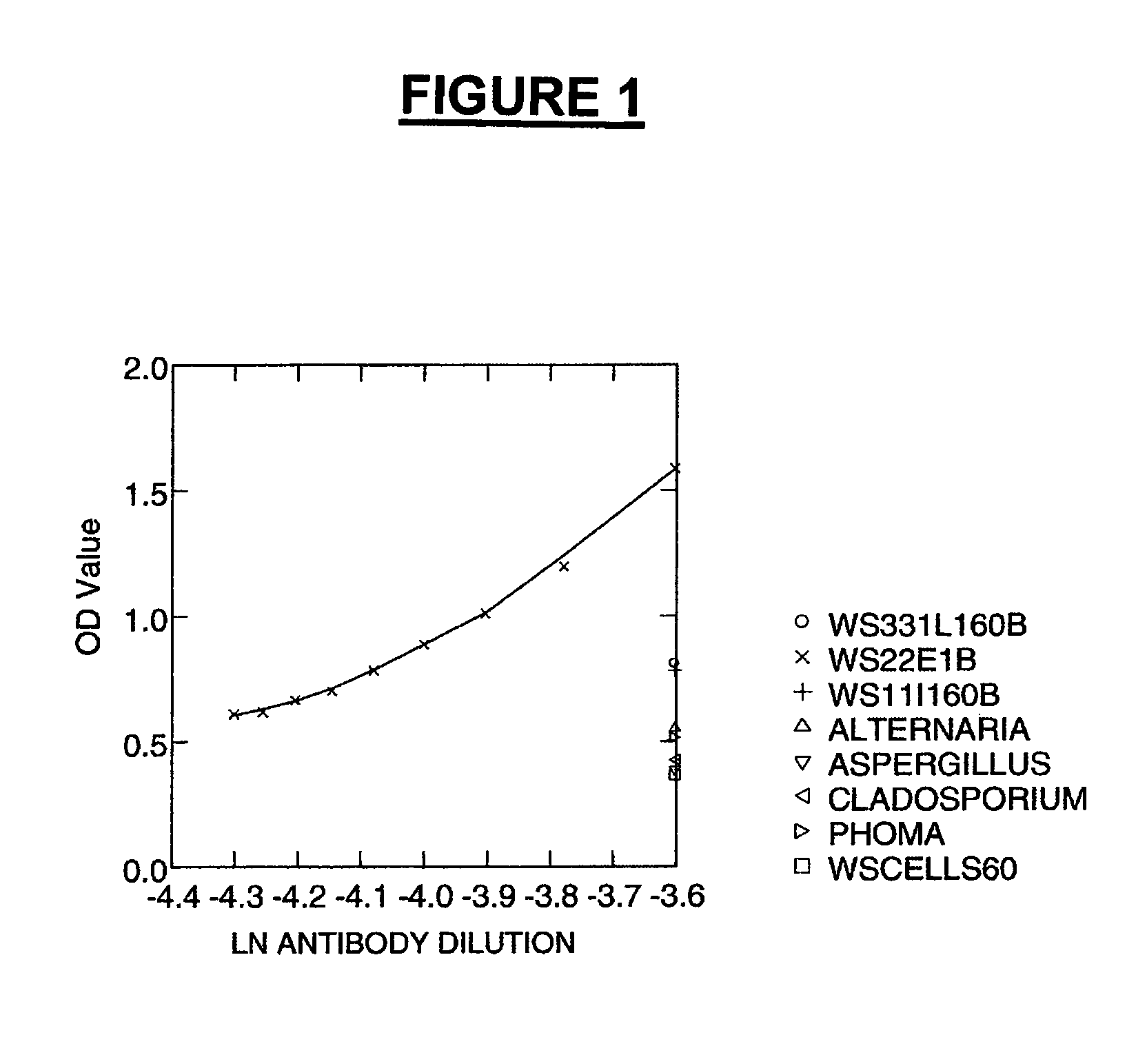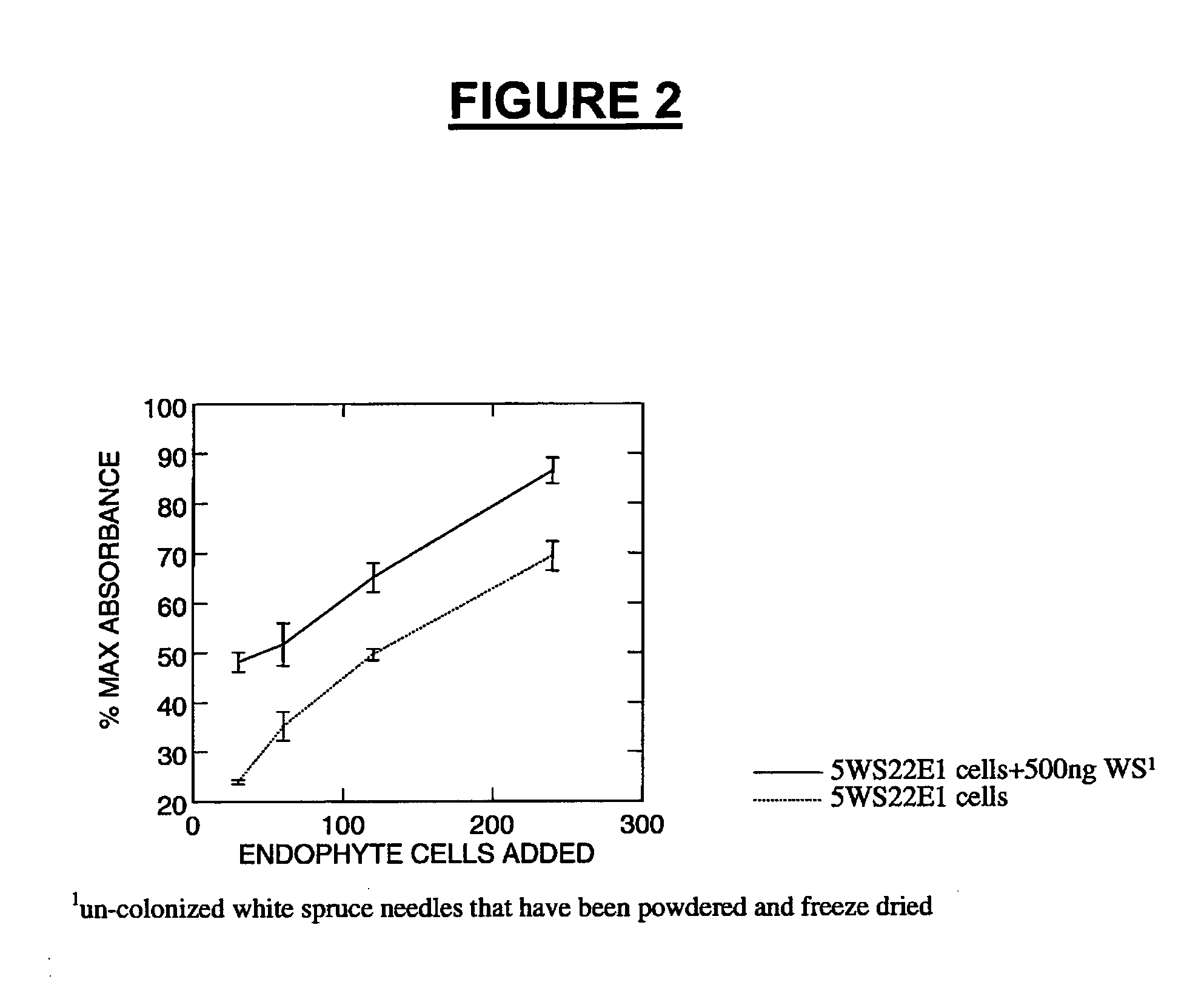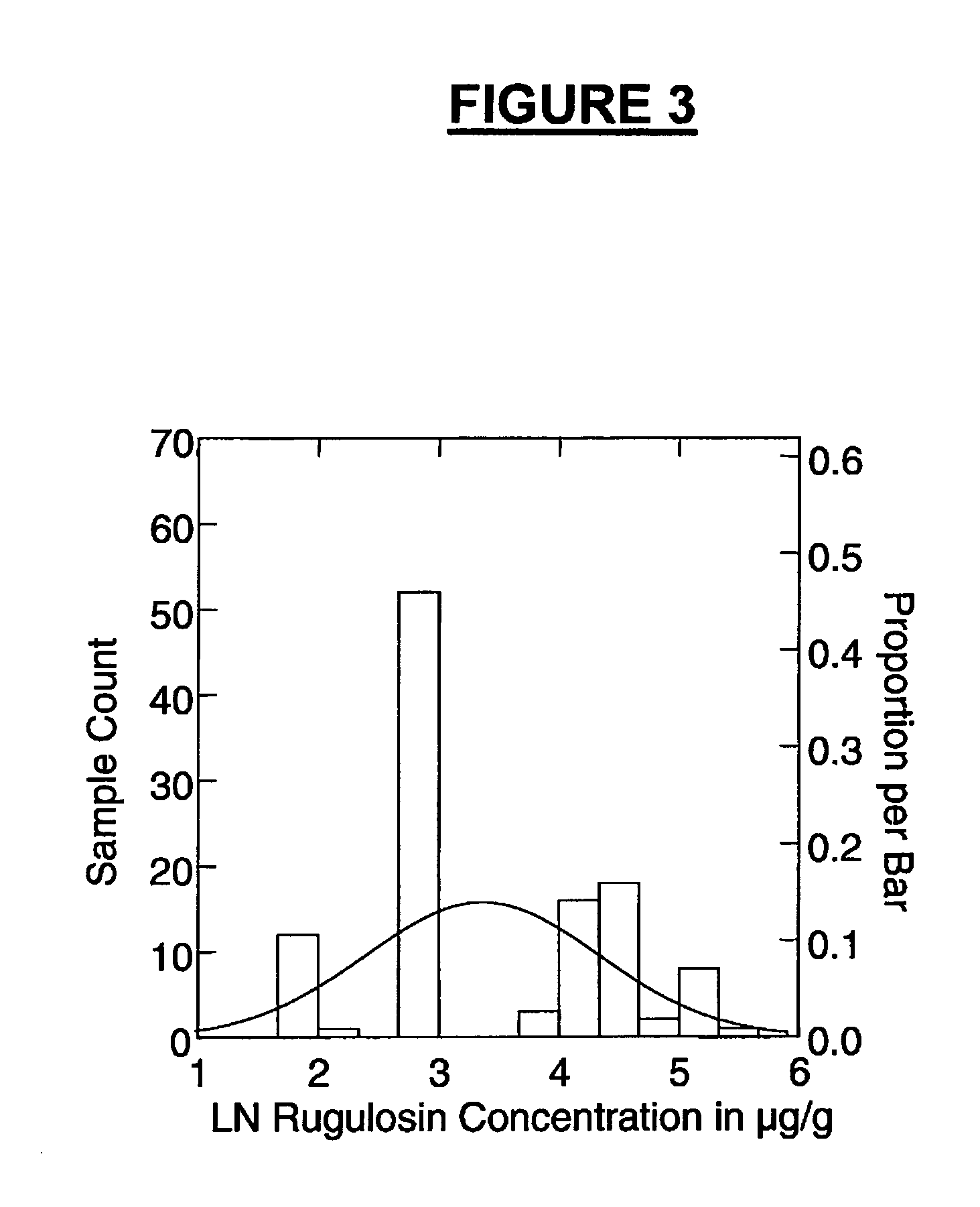Endophyte enhanced seedlings with increased pest tolerance
a technology of endophyte and seedlings, applied in the field of eco-sensitive approaches to pest management, can solve the problems of destroying forests, affecting the economic viability of eastern spruce budworm, and vulnerability of conifers to pest damage, so as to increase the tolerance of a pest, increase the colonization efficiency, and increase the tolerance
- Summary
- Abstract
- Description
- Claims
- Application Information
AI Technical Summary
Benefits of technology
Problems solved by technology
Method used
Image
Examples
example 1
[0172]The needles colonized by a rugulosin-producing endophyte were found to contain rugulosin in concentrations that are effective in vitro at retarding the growth of spruce budworm larvae. Larvae presented with endophyte infected needles containing rugulosin did not gain as much weight as those eating uncolonized needles. The impact on the budworm was much greater than anticipated. One strain 5WS22E1, was the most successful antagonist of larval growth. Needles of 17 of 22 seedlings colonized by rugulosin-producing strains were toxic to the insects. Needles infected by a different family of strains producing vermiculin were also toxic to the insects.
[0173]Rugulosin was unambiguously present in needles infected by rugulosin-producing strains and not found in either control or in the seedlings colonized by the vermiculin-producing endophyte. In needles that significantly affected budworm weights, rugulosin concentrations averaged 8 μg / g. This was >15 times the mean concentration fou...
example 2
Antibody Assay for Detecting Endophyte
[0174]The following describes (1) the development of a polycolonal antibody for the rugulosin-producing endophyte 5WS22E1; (2) the inoculation of 1235 seedlings and subsequent growth outdoors under commercial nursery conditions (3) analysis of these needle samples using the culture method previously employed and the antibody method and (4) HPLC analysis for the presence of rugulosin in ˜10% of the positive samples.
Materials and Methods
[0175]The strain employed, 5WS22E1 (DAOM 229536; rugulosin producer) was described in Miller et al. (2002). Control-pollinated full-sib families of white spruce were produced for inoculation. The families used were chosen to provide a diverse set of genotypes. Nine families originating from unrelated white spruce parents were used. The parents were selected from the J.D. Irving Limited genetic improvement program and originated within a range of 45 N to 47.5 N Latitude and 65 W to 70 W Longitude in New B...
example 3
Fungal Collections
[0199]From ca. 12 sites in New Brunswick, Nova Scotia, Quebec and Maine, branches were collected from superior trees of white spruce, red spruce and balsam fir in various stands, primarily in relatively undisturbed natural forest stands but also in 20-30 year old plantations. This was done from 1985-2005. Branches were collected either directly in the field or from branches of trees which had been grafted from field selections and grown in a clone bank plantation in Sussex, New Brunswick. From the branches, needles were surface sterilized and plated to general procedures developed by Carroll and colleagues (e.g. Carroll and Carroll, 1978). Briefly, typically 20 healthy needles were harvested from each branch. These were surface sterilized by immersion in 70% ethanol, followed by 6% sodium hypochlorite for 10 min followed by rinsing in sterile de-ionized water, blotted dry on sterile tissue and plated on 2% malt extract agar. Plates were incubated at 18° C. for ˜6 w...
PUM
| Property | Measurement | Unit |
|---|---|---|
| time | aaaaa | aaaaa |
| time | aaaaa | aaaaa |
| temperatures | aaaaa | aaaaa |
Abstract
Description
Claims
Application Information
 Login to View More
Login to View More - R&D
- Intellectual Property
- Life Sciences
- Materials
- Tech Scout
- Unparalleled Data Quality
- Higher Quality Content
- 60% Fewer Hallucinations
Browse by: Latest US Patents, China's latest patents, Technical Efficacy Thesaurus, Application Domain, Technology Topic, Popular Technical Reports.
© 2025 PatSnap. All rights reserved.Legal|Privacy policy|Modern Slavery Act Transparency Statement|Sitemap|About US| Contact US: help@patsnap.com



